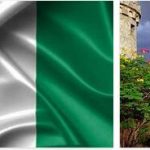According to abbreviationfinder, Abuja is the capital of Nigeria as the ancient capital of the country, was Lagos, being replaced by it in December of 1991. It is located in the center of the country with a population of 778,567 residents according to the 2006 census, adding the metropolitan area to more than 1 million residents. It is a young planned city that began to be built in 1976 in a central place with easy access and a pleasant climate, in it are located the Headquarters of the Government, the National Assembly and the Supreme Court among other institutions.
It is the best planned city in Africa, and one of the healthiest and most expensive on the continent. However, the low-income population living in peripheral areas do not have running water, electricity or sanitary conditions.
About Nigeria
Nigeria or Federal Republic of Nigeria is a country on the African continent, located in West Africa, bordered to the north by Niger, to the east by Chad and Cameroon, to the south by the Gulf of Guinea, and to the west by Benin. Its name comes from its main river, the Niger.
History
The emergence of Abuja is related to the excessive and uncontrollable growth of the population of Lagos (the former national capital) and also seeking a central and neutral area with easy access. In this way it was possible to avoid ethnic and religious conflicts and contribute to achieving national unity.
The construction of the new capital began in the late 1970s, but due to economic and political instability, the first construction works and initial stages were not completed until the late 1980s.
In the political sphere, most of the countries moved their embassies to Abuja, which was the new seat of government, but they kept their old embassies as consulates in Lagos, which remained the commercial capital of the country.
The modern city is the headquarters of the Economic Community of West African States and regional headquarters of the Organization of the Petroleum Exporting Countries. Some areas around the capital have grown by around 20% or 30% and on the edge of the capital, irregular settlements have expanded very quickly, for which demolition measures have had to be applied.
It is very famous a huge monolith of 400 meters high that is on the outskirts of it, which was formed by the erosion of the waters. “Aso”, the name by which he was called, means victorious in the language of the Asokoro, whose name means “the people of victory”. In Aso Rock the Declaration of Aso Rock was produced in 2003, issued by the heads of government of the British Commonwealth of Nations during the meeting that took place in the part of the city near the monolith. It reaffirmed the principles of the Commonwealth as detailed in the Harare Declaration, but established the “promotion of democracy and development” as a priority of the organization.
Geography
The city of Abuja is located in the center of the country, specifically between the coordinates: 9 ° 4′0 ″ N 7 ° 29′0 ″ E? /? 9.06667, 7.48333, near the confluence of the Benue and Niger rivers, in a typical flat savanna area.
Climate
The region’s high altitude and rolling terrain act as a climate regulator. The rainfall that occurs reflects the location of the territory on the windward side of the Jos Plateau and the area of increased air masses.
The area where the city is located has three seasons in the year, a warm and humid one characterized by the presence of rainfall and a dry season. Between these two seasons there is a dry wind interval called harmattan, which is characterized by sand clouds and a feeling of cold and dryness.
The rainy season begins in April and ends in October, where daytime temperatures can reach 30 ° C and nighttime temperatures drop to 22 degrees. In the dry season, temperatures can rise to 40 ° C during the day, drop to 12 degrees at night.
Annual rainfall is between 1100 mm and 1600 mm.
Population
The young city had 778,567 residents (according to the 2006 census) but Including its metropolitan area it reached 1,178,567 residents. See population of Nigeria.
Districts
As the city was being built, phases were defined with their respective districts.
- In Phase 1 five districts are located: Central, Garki, Wuse, Maitama, and Asokoro.
- In Phase 2 five districts are also located: Kado, Durumi, Gudu, Utako and Jabi.
- In Phase 3 4 districts are located: Mabuchi, Katampe, Wuye and Gwarimpa.
Apart from these districts, the city has five other suburban districts which are: nyanja, Karu, Gwagwalada, Kubwa, and Jukwoyi.




